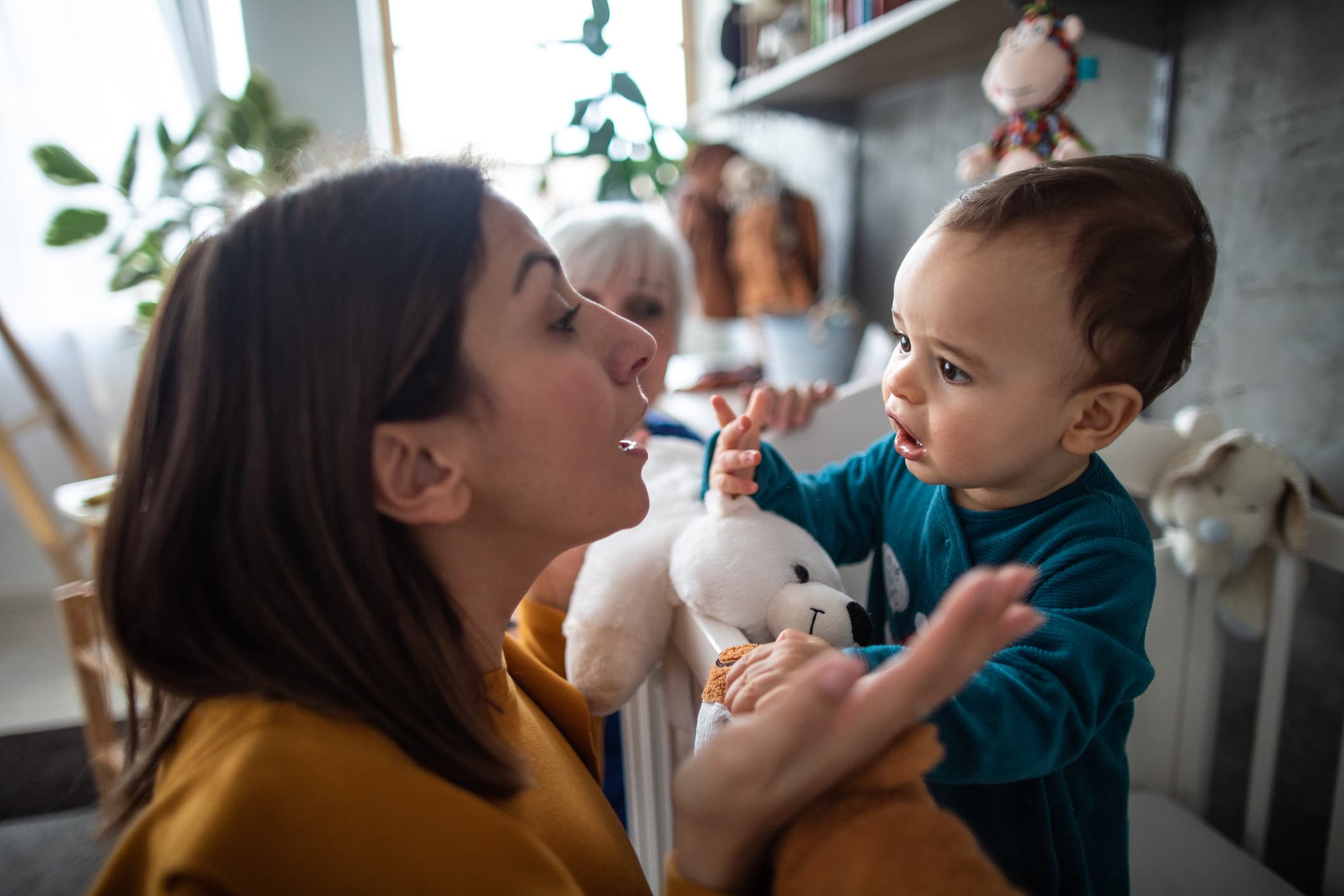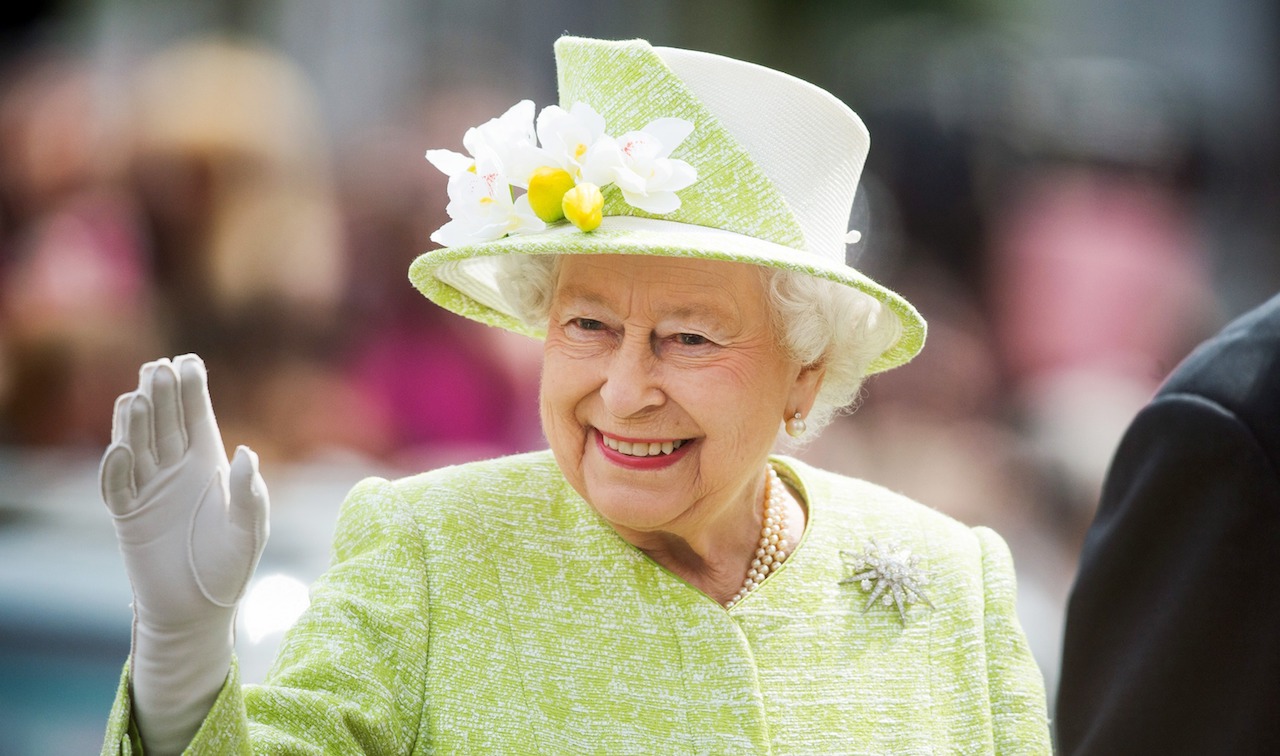Is there anything more exciting than hearing your child’s first words? After months of smiles, eye contact, and gurgles, your child will finally be able to communicate. They can tell you what’s on their mind. This time in your child’s life is truly magical. But it can also be stressful if your child isn’t “on track” or isn’t doing exactly what their peers are doing. So how do you get your child to start talking?
When it comes to developing language, there is a wide range of abilities. Some children say their first words anywhere from 9-15 months of age.1 There are many factors that can impact when your child will start talking. This includes their personality, the number of languages used in the home, and the quality of language children hear each day. As a pediatric speech-language pathologist, I have spent the past 15 years working with families to optimize their child’s language skills to get them on the fast track to speaking. Here are 11 tips to get your child to start talking:
1. Keep It Simple
One of the first things I teach caregivers when we are working together is to use simple language. As a general rule of thumb, babies can understand one word beyond what they can say, so babies who haven’t yet started speaking do best when you use 1–2-word phrases. Put this into action by taking a phrase like “look at this ball I have” and breaking it down to “ball roll” while rolling the ball or “bounce ball” while performing that action. When caregivers use simpler language, their children see a way in and are much more likely to imitate.
2. Follow Their Lead
If you’re anything like me, you love to have a plan. But sometimes, your child may not be interested in what you’ve planned to get them to start talking, and that’s okay. Children need to be motivated to use language to begin learning to speak, and that will only happen if something interests them. To try this at home, place two to three toys in your play area. Next, wait for your baby to gravitate toward an activity. Label the activity for your child and get to playing.
3. Create Predictable Routines
Babies thrive within a familiar routine. Knowing what will happen before, during, and after each activity frees up the mental space they need to learn a new skill. Most families have a flow to each day. This is a great time to add language to your activities, even better if you use the same language each day. For example, when getting your child ready to eat, you can say “baby up” when placing your child into their feeding chair. Then, you can use familiar language when you pour milk and place each item on the plate. Even something as simple as “on plate” works. Because you follow these routines every day, your baby will soon want to participate in these familiar routines by using the words they have heard every day.
4. Know When to Get Silly
Sometimes the best thing about routines is knowing when to make them silly. Using the example of mealtime, you can change what you do by saying “baby down” and sitting on the floor with the baby, or placing a cup on your child’s plate, rather than next to it. Because these routines and the accompanying language are so familiar to your child, this is a great way to get your baby to protest by saying “no” or by correcting you by saying “up!”—two great additions to an early learner’s vocabulary.
5. Sound Effects Count
Sound effects are great for babies to begin taking their babbles and jargon to explore how sounds go together. Although they may not be the “real” words you are looking for, I like caregivers to realize that sound effects, such as animal sounds, vehicle noises, and other onomatopoeia, count as words when you are tallying up how many words your baby has for your next pediatrician visit. Sound effects are a great way to bring play to life and make your child participate risk-free. While at the playground, you can say “whoosh” every time you push your baby on the swing or “whee” when they go down the slide. Every time you drop something is an opportunity to add a “boom” or “uh-oh.” Be consistent; sound effects may be your child’s earliest words on the road to get them to start talking.
6. Give Them Choices
It can be confusing for a young learner to know what the language expectations are. After all, this whole speaking thing is brand-new. When playing or interacting with your child, it’s helpful to offer choices so they can hear the language they are supposed to use. You can try this when doing a puzzle by holding out two pieces to ask, “Want cat or dog?” Make sure to hold the pieces up to your face so your child can also see how your mouth is moving while you’re talking.
7. Turn Grunts Into Words
When I do my initial meetings with families, the first question is, “what is your baby currently doing to communicate?” Most children are grunting, pointing, and pulling their grown up to what they want because caregivers know what their babies want. This gives you the advantage of being able to turn those grunts into actual words. Next time your baby grunts and points to the refrigerator, try turning their grunt into something more functional. You can use something like “want milk?” The more often you do this, the sooner baby will try to imitate, and you can get your child to start talking.
8. Make it a Song
Babies begin hearing music in the womb, so it’s no wonder that songs are a magical way to teach babies new words. Try incorporating a song with the language when creating your daily routines. I am guilty of using the “Row Your Boat” tune to make all my routine-based songs, but you can choose whichever song you like. Once your baby is familiar with the song, you can try to leave out a single word at the end of a stanza to see if they will fill in the blank.
9. Mirror Play
You probably already know babies love to look at themselves. Mirrors provide an excellent opportunity for kids to learn how the different parts of their mouths work together, which will eventually help them make sounds and words. Make mirror play a part of your bath time routine by having a “mouth conversation” with your baby. You can take turns making different facial gestures, such as raspberries, surprised faces, or sticking out your tongue. After all, your child will need to be able to imitate gestures before learning their first words.
10. Add a Gesture
Gestures and baby signs are another great way to provide your child with some language skills before being able to verbalize.2 This can help decrease frustration in little ones with many ideas to share. Start with simple waves of “hi” and “bye” for every situation (hi, toy/bye, toy/hi, milk/bye, milk). You can then incorporate other meaningful gestures, such as the sign for “more,” “give me,” and “all done.”
11. Have Fun!
The most important part of learning with your child and getting your child to start talking is to have fun. I know it can be stressful when all you want is to hear your child’s first words. However, babies can sense when you are nervous or not fully engaged, and they will mirror those emotions. Find the routines that work for you and your family and build from there!

 PARENTING TIPS
PARENTING TIPS PREGNANCY
PREGNANCY BABY CARE
BABY CARE TODDLERS
TODDLERS TEENS
TEENS HEALTH CARE
HEALTH CARE ACTIVITIES & CRAFTS
ACTIVITIES & CRAFTS


